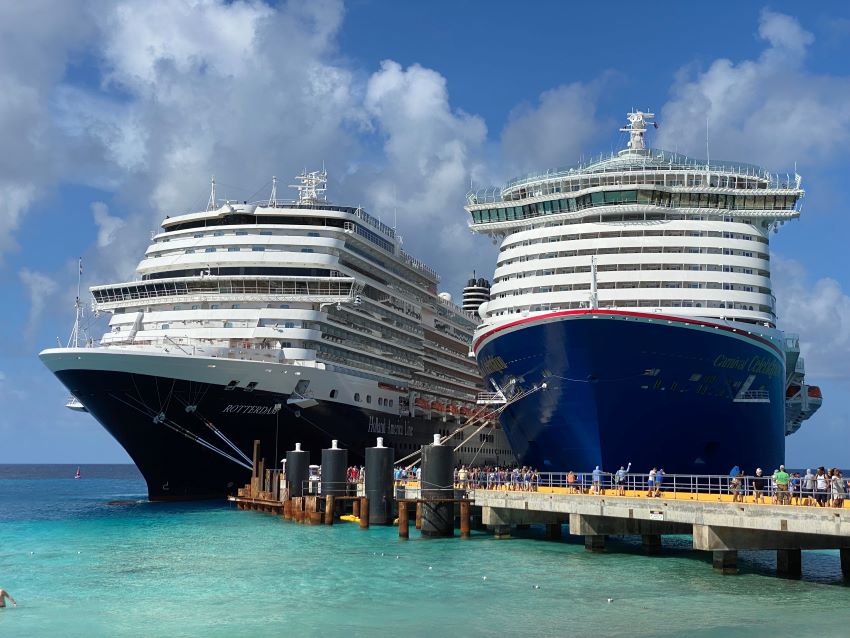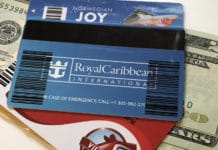When it comes to your cruise, the majority of time is spent on the ship, but perhaps nothing is looked forward to as much as visiting ports of call.
These port visits are a chance to get out, stretch your legs, explore a new place, and perhaps hit the beach or take in the sights. And during all of that, you’ll hopefully make some memories and do things you’d never get a chance to do back home.
But before you get off the ship, there’s plenty you will want to know about visiting. From what you need to bring with you into port to what the debarkation process (getting off the ship) is like, to safety, we’ve covered everything you’d want to know.
In This Article...
What Is There to Do in Port?
Every port is unique, offering different things for cruise passengers to do. As well, different regions offer different options. For example, what you do in Cozumel, Mexico isn’t going to be the same as what you’d do in Ketchikan, Alaska.
For trips to the Caribbean (which make up the bulk of cruises from the United States), most things to do revolve around eating, shopping, and the beach. Ports will have lots of restaurants catering to cruise passengers, as well as plenty of shops selling everything from cheap trinkets to fine jewelry.
The cruise line will also offer excursions that you can book that will give you a chance to do things you wouldn’t be able to back home. These trips can range from tequila or chocolate tasting to visiting cultural sights, but most often tend to be beach activities. This includes things like snorkeling tours and beach getaways with catered food and drink.
One nice thing is that cruise excursions offer a wide variety of options and purposely have options that are good for families or people with mobility issues. So if you want to go on an adventure sailing a catamaran or scuba diving, you can. But you can also have an easy driving tour of the port with a meal.
Ports in other parts of the world are decidedly different and are more likely to revolve around cultural activities or exploring the area. For instance, in Alaska you can go on trips to see glaciers or explore the natural scenery.
No matter where you visit, however, there will be plenty to do.
How Long Does the Ship Stay in Port?
For as much as ports are featured when booking your cruise, you spend surprisingly little time in each under most circumstances.
Each ship has a different schedule, but you can expect to normally spend about 8-9 hours in port at each stop. Ships normally arrive first things in the morning (7-8 a.m.) and then leave in the late afternoon or early evening (4-6 p.m.). As well, passengers normally aren’t let off right when the ship docks and they also need to be onboard before the ship departs. This limits the time more.
While that stay may seem short, for most people it’s perfectly fine. It offers plenty of time to explore and go have an adventure, while making it back for dinner and evening on the ship.
Some cruise lines are opening up more overnight stays in ports or extended hours that stretch well into the evening.
Do I Have to Book a Shore Excursion?
A shore excursion is essentially a guided tour or activity in a port. This can include everything from simple walking tours to scuba diving to days at the beach. They are sold through the cruise line, but they are completely optional. (See our full guide to shore excursions here.)
Your time in port is yours and you can spend it how you want. Shore excursions give you an easy way to go enjoy a port that you might not be familiar with. Booking through the cruise line is normally a little pricey (expect to spend about $100 per person), but offers an amazing amount of convenience. In our experience, we’ve always thought prices were high when booking, but afterward always felt like they were worth the money.
But if you want to save cash, or simply want to take it easy, then you don’t have to book anything. In fact, many people simply go explore ports on their own instead of being part of a bigger tour.
Do You Have to Get Off the Ship in Port?
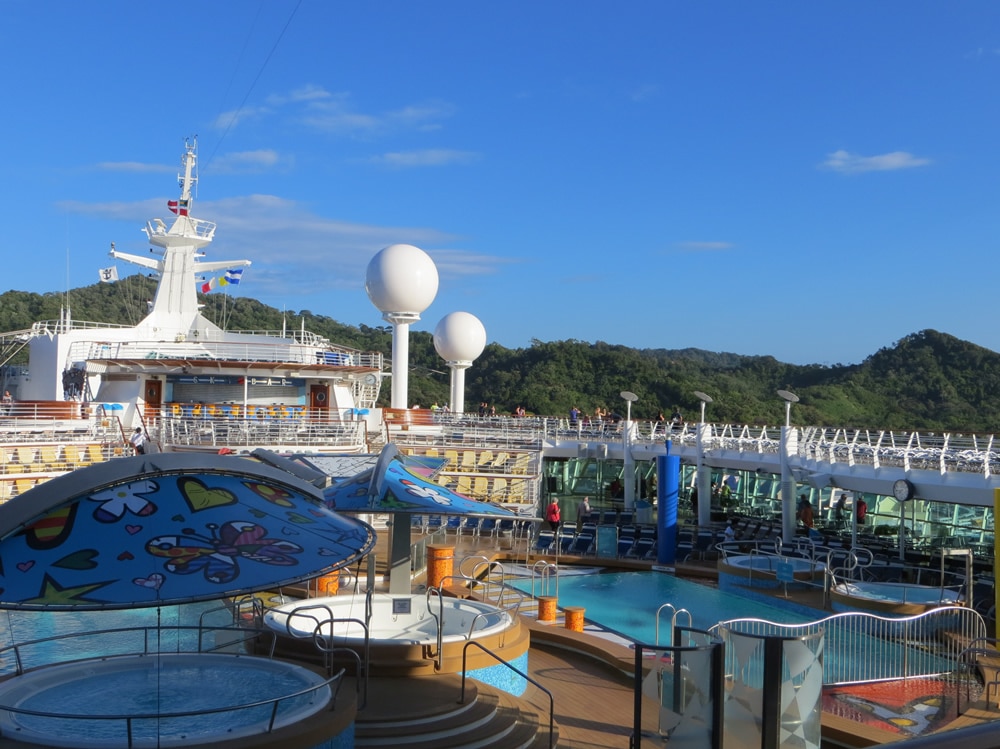
When you are on a cruise, the ship is your home away from home. And just like at home, you don’t have to go anywhere if you don’t want. Getting off the ship is optional.
In fact, many people enjoy staying onboard while in port as the ship is much calmer with fewer people. While there aren’t as many crew-led activities, the ship is still open. Meals are still served, and services like the spa, shopping, and more are also open. (The casino will likely be closed, however.)
For some, ports of call can be more fun on the ship than off.
What Is the Debarkation Process in Port Like?
You might think that getting off the ship is as simple as just walking off when you’re ready. It’s slightly more complicated than that.
First, once the ship docks in port, expect it to take about 30 minutes for the ship to be cleared by the authorities to let passengers off. At that point there will be an announcement that you are free to go ashore.
At this time you’ll head down to the gangway deck. Early in the day there will likely be a line to leave the ship. As you leave the security staff will scan your keycard, which lets them know you are off the vessel.
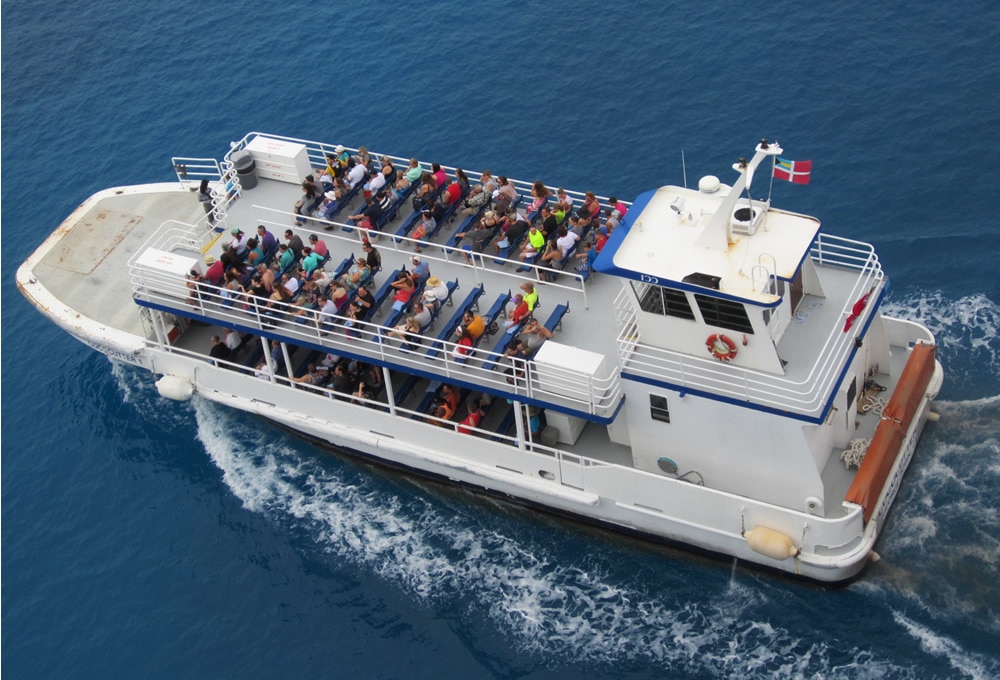
If the ship is anchored offshore (some ports are too shallow or don’t have the facilities to dock large ships), then you will be tendered to shore. The tender is a smaller boat that carries dozens of passengers at once into the port of call.
If your ship is docked at a pier, you then simply walk off the ship and head into shore. It can be a long way from the pier to land, and there are often shuttles for those with mobility issues.
What’s the Embarkation Process Like?
Ready to get back on the ship? You can head back anytime. When you leave the ship, the staff will let you know if you need your keycard and ID to get back on, or just your keycard. These days it’s a good idea just to bring both items with you as more ports seem to be requiring them to return to the ship.
When you’re ready to go back, there is often a checkpoint on land where you’ll show your ship keycard and/or ID. This is to ensure only cruise passengers are heading back to the ship. Show the security officer your card, and you’ll then be able to access the pier to get back. (Note: Some ports have started a security screening on land as well, with metal detectors and x-ray machines.)
Once at the ship, you’ll head through a security checkpoint with a metal detector and an x-ray for your belongings. If you bring any alcohol back on the ship with you, it will be taken and held in storage until the end of the cruise and then returned. Your keycard will also be scanned.
After being cleared, you are free to enjoy the ship, head back to the room, or anything else you’d like to do.
Are Ports of Call Safe?
In general tourist areas of the Caribbean and The Bahamas (the most visited destinations for American cruise passengers) can be considered safe. These spots cater to cruise passengers, which means making them comfortable. Crimes against cruise passengers are simply bad for business.
In fact, many ports now have built up areas right around the pier that feature lots of shops, restaurants, and more for passengers to enjoy, along with limited access from the general public. Apart from vendors, these areas are nothing but other cruise passengers.
That said, except for the case of private islands, ports of call aren’t an extension of the ship. So we suggest not letting your guard down. Feel free to enjoy yourself, but don’t flash fancy jewelry or cash or otherwise make yourself a target for crime.
The vast majority of people will have no issues regarding crime in ports, but it can happen.
What Should I Bring Into Port?
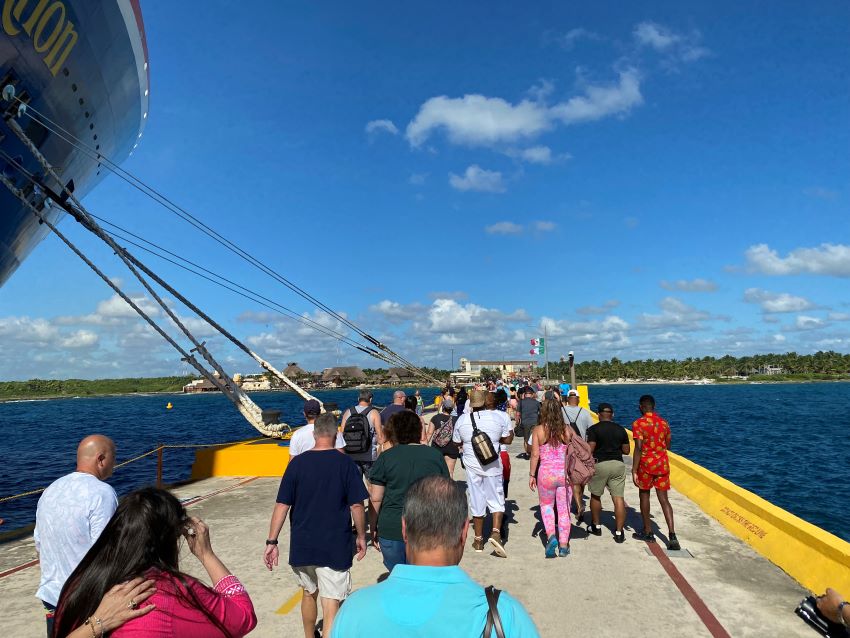
When you go into port, it’s important that you pack everything you’ll need for the day. After all, getting from the ship to the actual port can be about 10-15 minutes between getting your card scanned and walking down the pier to land. If you forget something, that means it’s a 20-30 minute round trip at a minimum. Instead, it’s a good idea to pack what you need.
We have a full list of suggestions here, but a few of the more important items include:
Your Keycard & ID: You don’t have to worry about forgetting your keycard. You have to have it in your hand to get off the ship. Still, it is a must as you won’t be able to get back on the ship without it. As well, it’s a good idea to bring some ID. It doesn’t have to be a passport, but many ports require some sort of photo ID (like a license) before letting you get back to the pier to board the ship.
Walking Shoes: Sandals or flip-flops are a good idea for hitting the beach, but many people do a surprising amount of walking in port. For instance, the pier alone can be 1,000 feet long, and that’s just to get into port. We suggest wearing some comfy walking shoes as you head in and bringing a pair of flip-flips with you for once you are on the beach.
Cash: On the ship everything is paid for with your room keycard. It is extremely convenient, but it doesn’t work for spending in ports of call. There, you can use a credit card, but it’s a good idea to bring some cash for the day.
For more things to bring in port, see our article here.
Do I Need to Know Another Language in Port?
No, you don’t have to know Spanish in ports in the Caribbean. While many ports have Spanish as the local language, English is widely spoken in all ports of call. Even if you don’t know “hola” from “adios,” you will be just fine.
Do I Need to Exchange Money in Port?
Having to change currency multiple times as ships head from port to port would be a major hassle. Luckily, ports of call in North America all widely accept U.S. dollars. There’s no need to change over money, but you should know that if you pay in dollars you might get change back in a different currency.
You can also use your credit card in many locations, just as you would back home.
If traveling Europe, you’ll want euros as the most convenient way to spend money.
What if I am Late Getting Back to the Ship From Port?
Thinking you might be late to go back to the cruise ship? The “all aboard” times are not suggestions. While the ship doesn’t leave the dock right when everyone is supposed to have been aboard, there is a limited window for you to make it back. Our suggestion is to plan to be back on the ship one hour before the all aboard time that’s given. That gives you some wiggle room in case something comes up.
And yes, cruise ships will leave even if you aren’t back aboard. It’s not something you want to happen to you.
Will My Phone Work in Port?
In the middle of the ocean, there is cell service, but it is expensive to access. In port your phone will work, but keep in mind that you will be accessing via international towers, which can be pricey.
The good news is that these days cell plans often include some international access, especially for Mexico. That means some people can use their phone just like they can back home. As well, cell companies sell cruise ship and/or international plans if they don’t give you access already. For a small fee you can use your phone while in port without seeing huge charges. That gives you a chance to call home or check email without spending a fortune.
If you aren’t sure what your plan allows, contact them to see how they can help. International plans for cruise travel are typically affordable. You can see more information about using your phone on a cruise here.
Is There Wi-Fi in Port?
Cruise ships offer wi-fi access even in the middle of the ocean, but it can be expensive — $20-30 per day in many cases.
If you can, wait until you get into port. Sometimes there are stores or restaurants in the port area that offer customers wi-fi for free. This gives you a chance to hop on and check email without having to pay a fortune like you would on the ship. Other times there are vendors selling wi-fi access in the port area.
Keep in mind this isn’t the case for every port, so it’s not a guarantee that you’ll be able to get online. Even so, given the cost of access while on the ship, it can be worth taking the chance.
What’s the Difference Between Private Islands and Normal Ports of Call?
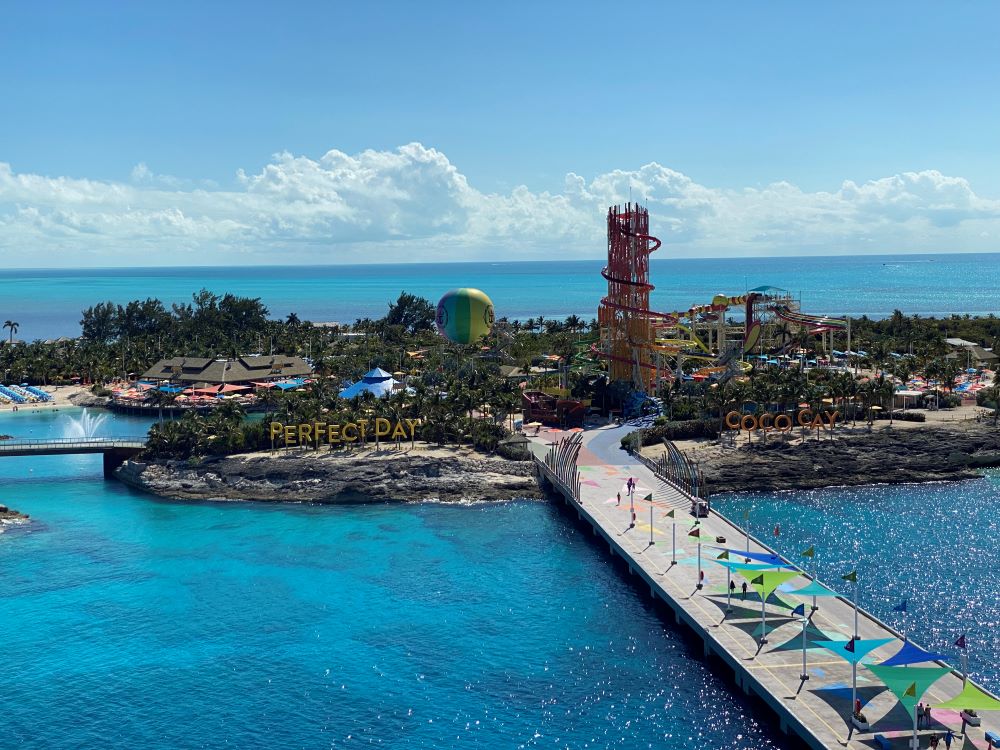
Many cruise lines offer stops at their own private islands, such as Royal Caribbean’s CocoCay.
The islands are exactly what they sound like. They are for the private use of cruise line passengers. So when you get off the ship, everyone there with you will be a passenger from your ship. Private islands cater to those visiting from the ship, typically offering easy access to beaches, drinks, food, and lots of activities and excursions. In short, they are a paradise created for cruisers and largely an extension of the ship. In fact, drink packages and wi-fi bought on the ship often work on private islands as well.
Typical ports of call also cater to cruise passengers, but they are independent of the cruise line. They are a jumping off point to go explore the area, and offer things you can’t get on private islands like cultural activities and an experience that’s not perfectly curated by the cruise line. While still touristy, they are more authentic than you’d get on a private island.
Think of the differences as similar to visiting Miami on vacation versus visiting Disney World. Both can offer a great time, but a very different atmosphere and experience.
What Else Should I Know About Visiting Port?
We highly recommend doing at least one excursion when visiting a port of call during your cruise. They can be pricey, but offer the ability to do things you simply can’t do back home and will make lifetime memories.
If your cruise is stopping at a private island and then one or two regular ports of call, we suggest scheduling the excursion for one of the regular ports of call. Private islands typically have easy-to-access beaches and things to do for free and without much fuss. The better things to do in most regular ports often carry costs, so it makes sense to pay for the excursion in these places.
Another tip is that ports of call are great if you forgot something at home. Didn’t remember deodorant? Or maybe you packed a toothbrush, but no toothpaste? Or you want some ibuprofen for a headache or more sunscreen?
To be sure, all of these items are available on the ship. Cruise ships have small shops selling sundries that you might need. The only issue is that they are expensive. For instance, we’ve seen a bottle of cold medicine for more than $17.
Instead, most ports have a small shop or pharmacy that sells anything you might need at more reasonable prices.
Have more questions about visiting ports? Let us know in the comments below.
More on Visiting Ports:
- Worth It? 15 Shore Excursion Questions & Answers
- Heading to Port? The 9 Must-Have Things to Bring With You

